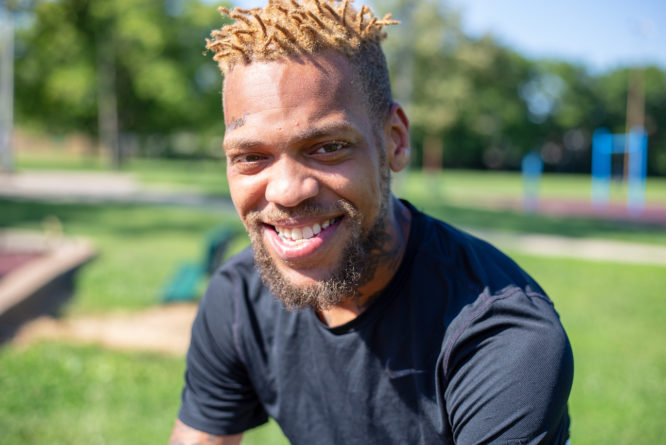Building Safe and Trauma-Informed Environments
The expert testimony, research, scholarship, and lived experience collected by the Commission revealed the following:
- Each year in the United States approximately five million children experience some form of traumatic experience (National Center for Mental Health Promotion and Youth Violence Prevention, 2012). More than two million of these are victims of physical and/or sexual abuse (National Center for Mental Health Promotion and Youth Violence Prevention, 2012).
- Studies have shown that one in four children will be touched directly by personal or community violence by the age of 18 (Costello, Erkanli, Fairbank, & Angold, 2002).
- Traumatic experiences can have a devastating impact on children, affecting their physical, emotional, cognitive, and social development (Barth et. al., 2008; Mental Health Connection). For example, young children exposed to five or more significant adverse experiences in the first three years of life face a 76 percent likelihood of having one or more delays in their language, emotional, or brain development (Barth et. al., 2008; Mental Health Connection). And, generally, people who have experienced trauma are (Substance Abuse and Mental Health Services Administration, 2015):
- 15 times more likely to attempt suicide
- 4 times more likely to become an alcoholic
- 4 times more likely to develop a sexually transmitted disease
- 4 times more likely to inject drugs
- 3 times more likely to use antidepressant medication
- 3 times more likely to be absent from work
- 3 times more likely to experience depression
- 3 times more likely to have serious job problems
- 2.5 times more likely to smoke
- 2 times more likely to develop chronic obstructive pulmonary disease
- 2 times more likely to have a serious financial problem (Mental Health Connection; Felitti et. al., 1998)
- Trauma often goes unnoticed. For example, when Cook County Hospital in Chicago started screening patients at their trauma center for post-traumatic stress disorder, they found that 43 percent of patients examined had signs of the disorder (Beckett, 2014). Studies also have found that trauma’s impact on racial and ethnic minority groups is disproportionately likely to go untreated (Roberts, Gilman, Breslau, Breslau, & Koenen, 2011).
These findings prompted the Commission to draft several recommendations that call for neighborhoods, communities, organizations, and systems that are more aware of and responsive to trauma, especially among kids.
To that end, the Commission issues the calls to action below.
Take Action
Change your environment
Build trauma-informed communities and spaces.
Support great school climates
While policy changes are important to changing the landscapes of our schools, it is only effective when paired with culture changes. Engage with your child’s school to facilitate a great school climate and culture for all students, teachers and administrators. This can take the form of attending PTA meetings, starting discussion groups with other parents, or…
Suggested Reading List
Beckett, L. (2014). The PTSD crisis that’s being ignored: Americans wounded in their own neighborhoods. ProPublica. Retrieved from: https://www.propublica.org/article/the-ptsd-crisis-thats-being-ignored-americans-wounded-in-their-own-neighbor
Citations
- Anda, R. F. (2009). The health and social impact of growing up with adverse childhood experiences.
- Barth, R. P., et. al. (2008). Developmental status and early intervention service needs of maltreated children. Final Report. US Department of Health and Human Services.
- Beckett, L. (2014). The PTSD crisis that’s being ignored: Americans wounded in their own neighborhoods. ProPublica. Retrieved from: https://www.propublica.org/article/the-ptsd-crisis-thats-being-ignored-americans-wounded-in-their-own-neighbor
- Costello, E. J., Erkanli, A., Fairbank, J. A., & Angold, A. (2002). The prevalence of potentially traumatic events in childhood and adolescence. Journal of traumatic stress, 15(2), 99-112.
- Felitti, V. J., et. al. (1998). Relationship of childhood abuse and household dysfunction to many of the leading causes of death in adults: The Adverse Childhood Experiences (ACE) Study. American journal of preventive medicine, 14(4), 245-258.
- Mental Health Connection. Recognizer trauma-statistics. Retrieved from: https://www.recognizetrauma.org/statistics.php
- National Center for Mental Health Promotion and Youth Violence Prevention. (2012). Childhood trauma and its effect on healthy development. Retrieved from: https://sshs.promoteprevent.org/sites/default/files/trauma_brief_in_final.pdf)
- National Child Traumatic Stress Network. (1999). Creating trauma-informed systems. Substance Abuse and Mental Health Services Administration. Retrieved from: https://www.nctsn.org/resources/topics/creating-trauma-informed-systems
- Roberts, A. L., Gilman, S. E., Breslau, J., Breslau, N., & Koenen, K. C. (2011). Race/ethnic differences in exposure to traumatic events, development of post-traumatic stress disorder, and treatment-seeking for post-traumatic stress disorder in the United States. Psychological medicine, 41(01), 71-83. Retrieved from: https://www.ncbi.nlm.nih.gov/pmc/articles/PMC3097040/
- Substance Abuse and Mental Health Services Administration. (2015). Recognizing and treating child traumatic stress. U.S. Department of Health and Human Services. Retrieved from: (https://www.samhsa.gov/children/social_media_apr2011.asp)


